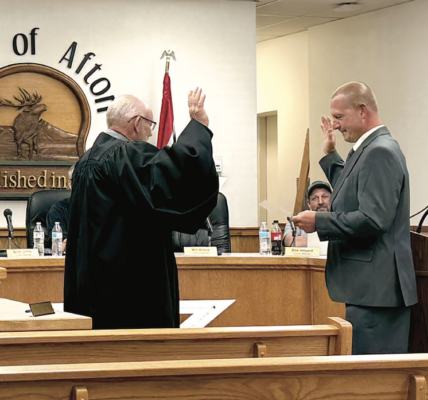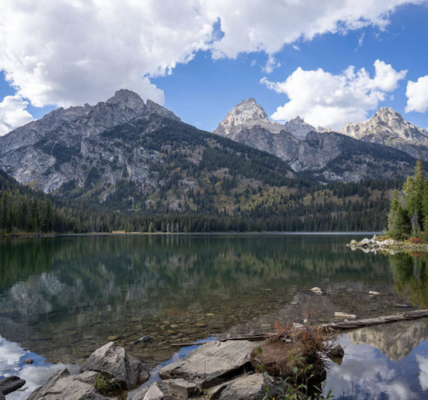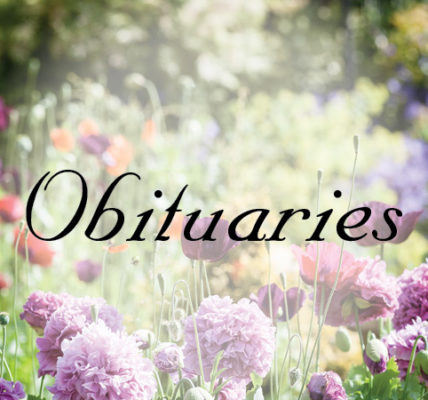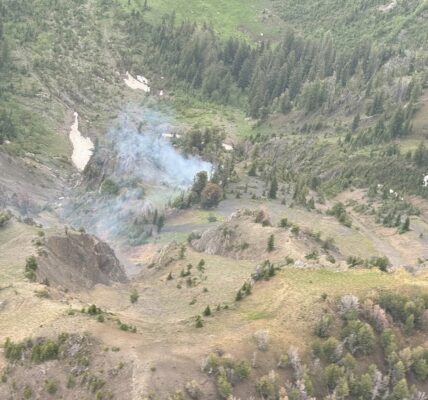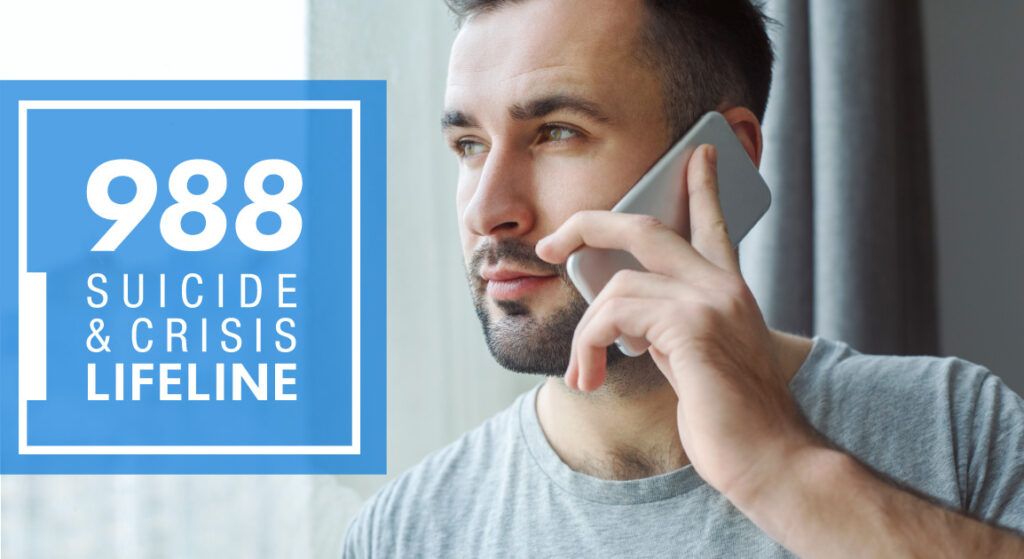
By Kate Ready
Jackson Hole News&Guide
Via- Wyoming News Exchange
JACKSON — Wyoming holds first place in a race nobody wants to win. In the Rocky Mountain “Suicide Belt,” Wyoming has the fewest people and highest suicide rate per capita.
According to the Wyoming Division of Victim Services, suicide is the second-leading cause of death for ages 10 to 24. While the number of suicides in the state decreased by 22% last year, the number in Teton County didn’t change. Spring and summer months see an uptick in mental crisis calls.
There have been two suicides in Teton County this year. A 38-year-old Florida woman died in May, and a 54-year-old local man died in June, both of gunshot wounds, Teton County Coroner Dr. Brent Blue said.
The county had six suicides in 2019, followed by three in 2020, six in 2021 and five in 2022. One of the six suicides in 2021 was a visitor, so the county rate for resident suicides remained the same the past two years.
As temperatures warm, suicidal ideation also trends upward.
In June the Jackson Police Department received 11 calls for suicidal subjects, the highest month so far this year. The data doesn’t capture all of the mental crisis calls police respond to, however, as they first may be called for a welfare check, medical assist, suspicious person, public intoxication or another reason.
July 16 marks one year since Wyoming and the nation transitioned to 988, the new, easy-to-remember mental health crisis help line. Since the three-digit code replaced the old nine-digit National Suicide Prevention Lifeline phone number last July, Teton County ranks ninth out of 23 counties in Wyoming for call volume to 988.
Mountain towns around the West, including Jackson, share a number of qualities that can make residents more susceptible to suicide: rural, isolated communities, long winters, a party culture and easy access to guns.
In 2021, the most recent year for which Centers for Disease Control and Prevention data is available, Wyoming had the highest suicide rate in the nation, four times the rate of New York, followed by Montana, New Mexico, South Dakota and Colorado. The prevalence of suicide in the rural West has earned it the moniker “Suicide Belt.”
Ralph Nieder-Westermann is the executive director of Wyoming’s LifeLine. The line receives 9,360 daily contacts via phone call, message or chat.
The 988 line reported June as one of the highest months of the year for call volume, right behind January. Nieder-Westermann said the reason behind the spike going into summer months is hard to pin down, though he floated one theory: “Part of it could be that kids are out of school,” he said. “They don’t have their friends.”
When talking to young people, he has noticed that they often say their friends are gone.
The 988 data is a “rough estimate,” Nieder-Westermann said, because if a caller lives in Wyoming but calls from an out-of-state number, the call will be sent to that state.
Due to stigma, the state’s annual suicide data also may not provide the full picture.
“One of the biggest problems is many of these deaths by suicide, it’s based on what the coroner reported,” Nieder-Westermann said. “So if the family doesn’t want the town or the county to know that somebody died from suicide, it’ll be a hunting accident or it’ll be a farm accident or it’ll be listed as an accidental death.”
Deidre Ashley, director of Mental Health and Recovery Services of Jackson Hole — formerly known as the Jackson Hole Community Counseling Center and Curran-Seeley — reported 600 “crisis interventions” in 2022. Ashley tallies those interventions based on assessments, crisis calls and walk-in office visits. So far there have been 460 crisis interventions in 2023.
Nieder-Westermann said that most of the time his five-person team fields calls from Wyoming residents who are starting to experience suicidal ideation and simply need someone to listen. His team educates the caller on local resources — mental health professionals or other community organizations. With the caller’s permission, they’ll follow up within 48 hours.
Nieder-Westermann said many Teton County callers struggle with the party culture.
A majority of behavioral health providers, 68%, named alcohol use as a top factor that strained community members’ mental health, according to the 2021 Behavioral Health Assessment. Community members are navigating being away from family within a transient tourist culture that normalizes excessive alcohol use, the study found.
Alcohol also leads to legal consequences. In 2020, Teton County had the highest percentage of alcohol-induced custodial arrests in the state, with 80%.
Blue, the county coroner, attributed many deaths to alcohol, as drinking among both young people and adults is far higher in Teton County than in the rest of the state or the nation overall.
What fuels overconsumption? Economic insecurity, the 2021 assessment found. Community members identified the cost of housing as their biggest challenge to well-being.
It’s no secret that Teton County has the highest concentration of wealth per capita in the nation. But those holding that wealth are few. A common refrain among Teton County 988 callers, Nieder-Westermann said, is managing the cost of living.
As one community member quoted in the assessment put it, the work required to survive in Teton County can be a road to loneliness.
“Having no options is lonely,” the person said. “Whether it’s housing, health access, lack of child care, etc., nothing is ‘easy’ here. It all takes tremendous work, which also leads to loneliness. With so much wealth in the community, it can be lonely to feel like you are the only one navigating all the crap of daily life here.”
One in 2 people in Teton County reported loneliness, compared with the national average of 24%. Ashley said work is underway completing the 2022 Behavioral Health Assessment, slated to be released in October.
It’s not only the working class struggling.
“Kids are struggling more than ever right now,” said Sarah Cavallaro, director of Teton Youth and Family Services, a nonprofit that offers a group home, crisis center and residential treatment.
“In November I took a snapshot of every kid we had. One hundred percent of 17 kids had suicidality, self-harm or depression,” Cavallaro said.
“Last fall, our community had two 9-year-olds present at the emergency room with suicidality,” Cavallaro said. That was a first in her three-decade-plus career.
Since 2021 the nonprofit also has seen a 70% increase in residential bed nights for families in crisis.
Cavallaro attributed the mounting struggles to a “slow creep” of isolation post-COVID, with younger and younger kids experiencing suicidal thoughts. The organization’s seasoned therapists are seeing “more extreme” self-harm behaviors among youths as well.
Looking for places to get people connected, especially youths, is key, Cavallaro said.
“You like art? Let’s connect you with a pottery class. You’re interested in making some money? Let’s try to find you a job,” Cavallaro said. “I think having structured connection is really an important first step.”
Still, youths and families struggle to access these stabilizing services. Ashley said affordability remains a big barrier for the uninsured and underinsured.
“Our private providers … their schedules are pretty packed,” Ashley said. “And then we are really missing that next level of care. We have intensive outpatient services, both mental health and substance use, but there’s nothing in between that.”
Short-term and voluntary crisis stabilization, for example, are missing.
Cavallaro identified another gap: a safe place for the “growing population” of youths who can’t make it in school to go for meals and programming, returning to their homes at night.
Cavallaro said Teton Youth and Family Services will be starting a pilot “day treatment” program for four to five high schoolers from 8 a.m. to 7 p.m. It will be geared toward kids who have been bullied, expelled or suspended or are having trouble sitting through school but who can’t shoulder the financial weight of inpatient services. The program will include study hall, substance abuse groups, recreation time, and social and emotional skill building.
The community has a committee devoted to suicide prevention. Beverly Shore, Jackson’s community prevention specialist, is a member and said one of the committee’s most effective programs has been a free Safe Talk Suicide Prevention Training.
To further combat the stigma that can keep suicide in the dark, Shore is planning a September walk for anyone in the community who has had an experience about suicidal thoughts, an attempted suicide or knows anyone that’s lost a loved one to suicide. She hopes it will build connection.
Shore also leads a suicide fatality review team that was started a year ago. The team — composed of law enforcement, the coroner and hospital and public health staffers — is meant to identify risk factors and discuss policy recommendations that could help prevent suicides. It hasn’t yet begun meeting due to scheduling conflicts, Shore said.
So far, Nieder-Westermann counts the 988 lifeline a success simply because “people are using it.” What started as three to four calls a day is now 10 to 12, he said. He’s worried for July 1, 2024, when COVID emergency federal funding for 988 will dry up.
Nieder-Westermann said he’s seen the impact of the nuanced empathy the Wyoming crisis counselors provide, as they often live in nearby or similar small towns as callers and can relate to their situations.
“Having people in state is critical,” he said. “Having people who know what winters are like and that you’re isolated in the wintertime because, if you’re in Dubois, one of your main roads close.”
Both Ashley and Cavallaro said this issue isn’t for one agency to solve; it’s a community problem.
“It’s not just the kids’ job,” Cavallaro said. “It’s the community’s job to reach out and try to provide spaces and places and opportunities for mentoring. What I do know is that when kids feel like they’re part of something bigger than them, or they’re plugged in and they’re getting engaged, they don’t typically have these issues.”

